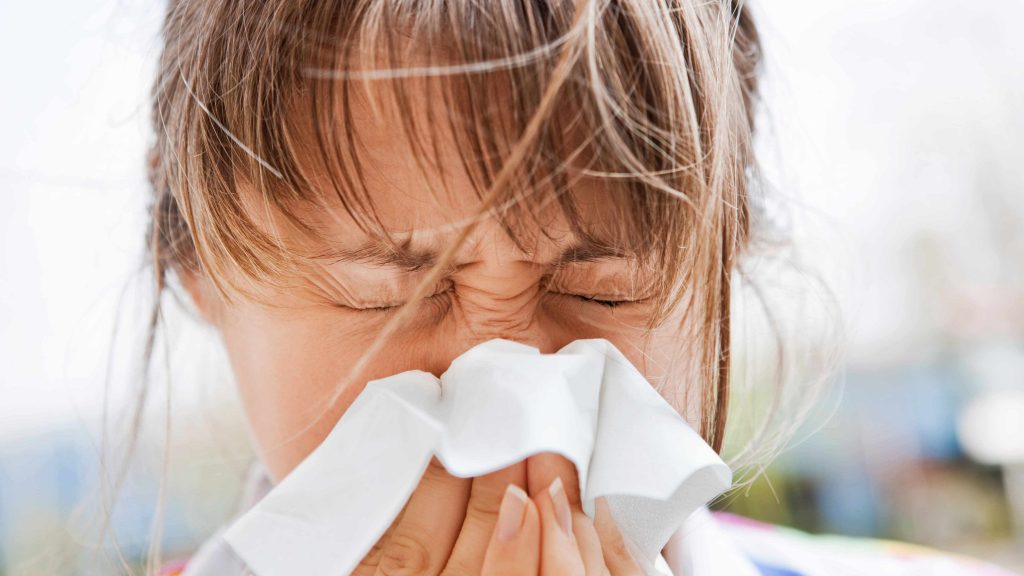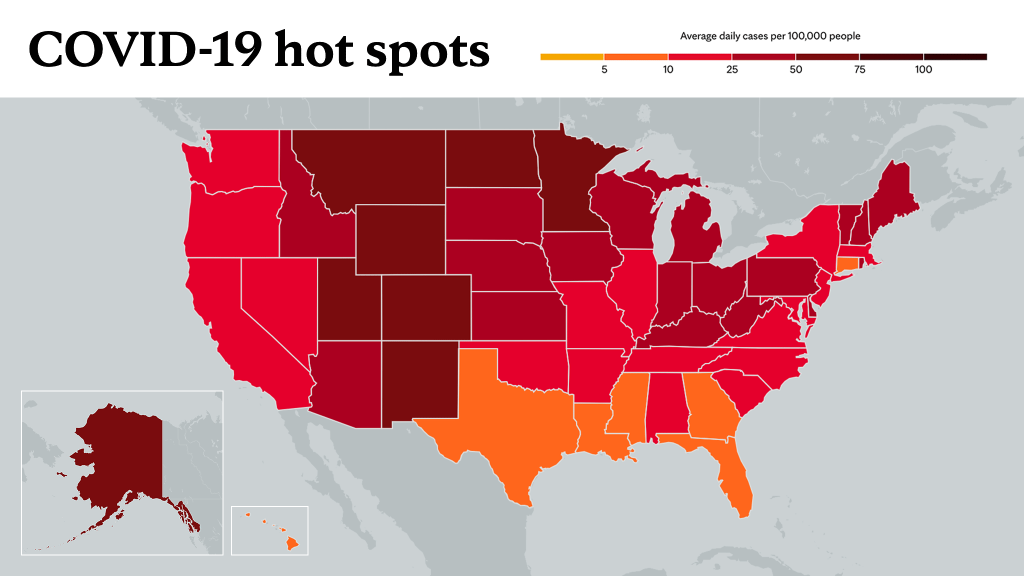
DEAR MAYO CLINIC: My 14-year-old daughter has seasonal allergies that usually spike in the fall, as well as a love of the outdoors, so it is not uncommon for her to be congested and coughing. Last year, we home-schooled her, but now she is back in school in person. As we move from the fall into winter, how can I tell the differences between her allergies, a common cold, the flu, and COVID-19?
ANSWER: Everyone experiences symptoms of congestion and cough from time to time. It's a common sign for many children, teens and adults, especially those who have seasonal allergies. However, as those are also symptoms of respiratory illness, it is important to be aware of the potential to spread germs to others, particularly since COVID-19, the common cold, seasonal allergies, and the flu share many similar symptoms.
Seasonal allergies and COVID-19
Unlike COVID-19, seasonal allergies aren't caused by a virus. Seasonal allergies are immune system responses triggered by exposure to allergens, such as seasonal tree or grass pollens.
While COVID-19 and seasonal allergies cause many of the same signs and symptoms, there are some differences. For instance, a fever will almost never accompany seasonal allergies, but it is a common sign of COVID-19. Also, muscle aches and fatigue, nausea, vomiting and diarrhea will likely not be present with allergies; whereas, they are common signs of a viral infection.
Also, while COVID-19 can cause shortness of breath or difficulty breathing, seasonal allergies don't usually cause these symptoms, unless you have a respiratory condition such as asthma that can be triggered by pollen exposure.
Treatment of seasonal allergies can include over-the-counter or prescription antihistamines, nasal steroid sprays and decongestants, and avoiding exposure to allergens where possible. Seasonal allergies can last several weeks.
COVID-19 and the common cold
Viruses cause COVID-19 and the common cold. COVID-19 is caused by SARS-CoV-2, a coronavirus, while the common cold is most often caused by rhinoviruses. These viruses spread in similar ways and cause many of the same signs and symptoms. However, there are a few differences. Specifically, nausea, vomiting and diarrhea are usually never present with the common cold.
While COVID-19 symptoms generally appear two to 14 days after exposure to COVID-19, symptoms of a common cold usually appear one to three days after exposure to a cold-causing virus.
There's no cure for the common cold. Treatment can include pain relievers and over-the-counter cold remedies, such as decongestants. Unlike COVID-19, a cold is usually harmless. Most people recover from a common cold in three to 10 days, although some colds can last as long as two or three weeks.
The flu and COVID-19
Both the flu and COVID-19 are contagious respiratory diseases caused by viruses that spread in similar ways with similar symptoms. The diseases also can cause no symptoms, or mild or severe symptoms. Because of the similarities, it can be hard to diagnose which condition you have based on symptoms alone. COVID-19 can cause more serious illnesses in some people than the flu, and the recent delta variant has been shown to affect children more severely. But the flu can be just as life-threatening.
COVID-19 symptoms generally appear two to 14 days after exposure to COVID-19. Flu symptoms usually appear about one to four days after exposure to influenza. You also can have both flu and COVID-19 at the same time.
Testing can be performed to see if you have COVID-19 or the flu. If your daughter has symptoms that are different or more severe than her allergies, including fatigue, muscle aches, fever, vomiting or diarrhea, you should consider testing. This will confirm if she has COVID-19, the flu or another virus. Expeditious testing also can allow for prompt antiviral treatment, which is available for flu and COVID-19.
Reduce risks
The best way to prevent seasonal allergies is to avoid your known triggers. If you're allergic to pollen, stay inside with windows and doors closed when pollen is high.
Wearing a cloth mask to slow the spread of COVID-19 also might provide some protection against seasonal allergies. Masks can prevent you from inhaling some larger pollen particles. However, smaller pollen particles will still be able to get through a mask. It's also important to wash your mask after each use since a mask might carry pollen particles.
You can further reduce your risk of infection from the viruses that cause COVID-19, colds and the flu by following these precautions:
- Get vaccinated for flu and COVID-19.
- Avoid close contact with anyone known to be ill.
- Wear a mask when in public places.
- Avoid large crowds.
- Wash your hands often with soap and water for at least 20 seconds or use an alcohol-based sanitizer that contains at least 60% alcohol.
- Avoid touching the mouth, nose or eyes.
- Be diligent about cleaning and disinfecting high-touch surfaces.
Also, if your daughter begins to exhibit symptoms, keep her home for a few days to monitor her symptoms. Talk with her pediatrician or a health care professional if she has signs or symptoms that last more than a few days or worsen. — Compiled by Mayo Clinic staff
____________________________________________
Information in this post was accurate at the time of its posting. Due to the fluid nature of the COVID-19 pandemic, scientific understanding, along with guidelines and recommendations, may have changed since the original publication date.
For more information and all your COVID-19 coverage, go to the Mayo Clinic News Network and mayoclinic.org.
Learn more about tracking COVID-19 and COVID-19 trends.








